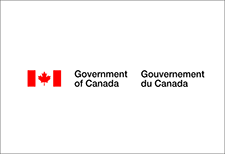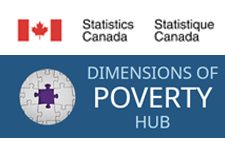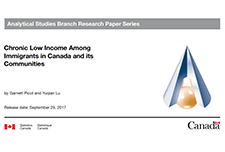Discover financial empowerment resources
Discover financial empowerment resources
This is the 2023 report on the progress of Opportunity for All – Canada’s First Poverty Reduction Strategy (PRS). While COVID-19 still threatens communities in Canada and around the world, the public health measures have largely been lifted. Temporary economic measures have also ended. At the...

Statistics Canada has created an "Opportunity for All"; a dashboard of 12 indicators to track progress on deep income poverty as well as the aspects of poverty other than income, including indicators of material deprivation, lack of opportunity and resilience. These indicators are broadly grouped...

Economic security programs such as Social Security, food assistance, tax credits, and housing assistance can help provide opportunity by ameliorating short-term poverty and hardship and, by doing so, improving children’s long-term outcomes. Over the last half-century, these assistance programs...

This report explores the connections between low income, poverty and protected characteristics, how these can shape the experience of poverty, and whether this can result in a similar inequality in terms of when and how poverty premiums are incurred. COVID-19 has thrown light on the link between...
This study examines the rate of chronic low income among adult immigrants (aged 25 or older) in Canada during the 2000s. Data is taken from the Longitudinal Immigration Database (IMDB) for the period from 1993 to 2012, with regional adjustments used for the analysis. Chronic low income is...

This overview paper broadly outlines the types of strategies being used to help people move up from poverty. It lays out basic categories for classifying such programs, explains the logic of various approaches, and offers some broad pros and cons of various types of interventions. The accompanying...
The gap between rich and poor is reaching new extremes. Credit Suisse recently revealed that the richest 1% have now accumulated more wealth than the rest of the world put together.1 This occurred a year earlier than Oxfam’s much publicized prediction ahead of last year’s World Economic Forum....
Approximately 2 million Ontarians live in low-income households, many allocating a significant portion of their finances to powering their homes. In these situations, electricity costs can force individuals to have to decide between paying energy bills and providing for other essential food,...
The Foundation partners with many researchers to produce the Toronto’s Vital Signs® Report. The Report is compiled from current statistics and studies, identifying progress we should be proud of and challenges that need to be addressed. It is a consolidated snapshot of the trends and issues...
Poverty is costing us too much. The National Council of Welfare provided examples in its 2002 report on the Cost of Poverty. In 2006, in Solving Poverty: Four Cornerstones of a Workable National Strategy for Canada, we outlined a governance model based on long-term vision, plans and budgets,...
This report draws upon research, evidence and the voices of people in poverty in its recommendations in order to maximize the child and family poverty reduction potential of the government’s commitments to date. Eradicating child poverty requires persistent targeted investments, sound research...
Just over seven years after the Government of Ontario launched a major poverty reduction strategy, it has broadened the scope to include not just families with children but, also, adults and people experiencing homelessness. This paper drills down on one key but complex policy file that is...
